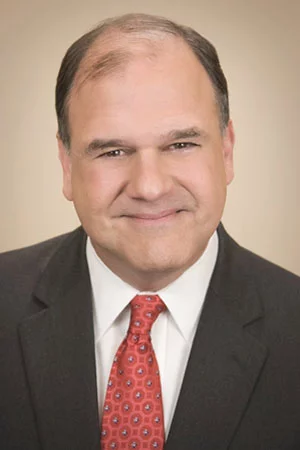
Members of the U.S. military are not immune to the substance use problems that affect society at large. With one notable exception, drug and alcohol use patterns mimic or are higher among military personnel than among civilians.
For example, the rate of illicit drug use is lower among military personnel than it is among civilians. However, the rates of prescription drug abuse, as well as heavy tobacco and alcohol use, are much higher and on the rise.
According to the 2008 Department of Defense Survey of Health Related Behaviors, among active-duty personnel, only 2.3% of troops had used an illicit drug in the past month, compared to 12% of civilians.
Despite the relatively low rate of illicit drug use, abuse of prescription drugs was found to be higher among service members than among civilians and on the rise. In 2008, 11% of troops reported abusing prescription drugs, which was up from 2% in 2002 and 4% in 2005. The majority of misused prescription drugs were opioid pain relievers. Prescriptions for pain relievers for troops quadrupled between 2001 and 2009, to nearly 4 million. Much of the increase was likely due to combat-related injuries and the stress of carrying heavy equipment during multiple deployments.
What is behind these patterns of substance abuse?
Experts believe that the unique culture of the military, as well as the potential stress of deployment during wartime, are behind some of the variations. As an example, the lack of confidentiality deters many of those who need treatment from seeking it. Additionally, perceived stigma and zero-tolerance policies make it difficult to identify and treat substance use problems of active-duty military personnel.
Among the troops, multiple deployments and combat exposure are the greatest risk factors for developing substance use issues. These individuals are more likely to have greater prescribed use of behavioral health medications and to engage in heavy weekly drinking and binge drinking. They are also more likely to experience drug and alcohol-related problems and to begin smoking or relapse after quitting smoking.
The zero-tolerance policy for drug use among military personnel is believed to be a major reason behind the consistently low illicit drug use rate recorded for the past several decades. The policy was implemented in 1982 and is enforced by frequent random drug testing. If military members test positive for illicit drug use they face criminal prosecution and/or dishonorable discharge.
Stateside Aftershocks
Even after discharge, returning veterans may carry the physical, emotional and psychological wounds from their military experience back home and into their civilian lives. One study found that 25% of Iraq and Afghanistan veterans reported symptoms of a mental disorder after returning home. Additionally, one in six of these veterans reported symptoms of post-traumatic stress disorder (PTSD).
Disorders such as these are strongly linked to substance abuse and dependence, traumatic brain injury, sleep disturbances and violence in relationships among returning military personnel.
Among veterans, young adults are particularly at risk for developing substance use disorders and mental health issues. One study conducted in 2004-2006 with veterans found that 25% of 18- to 25-year-olds met the criteria for substance use disorder; this is more than twice the rate of veterans aged 26-54 and five times the rate seen in veterans 55 and older.
Historically, suicide rates among military members were lower than among civilians within the same age range. However, in 2004 the trend began to turn, and the suicide rate among personnel in the U.S. Army began to climb; this rate surpassed the civilian rate in 2008.
Experts recognize that substance abuse is involved in many military personnel suicides. In 2010 a report by the Army Suicide Prevention Task Force revealed that nearly one in three active-duty Army suicides from 2005 to 2009 involved alcohol or drug use. The report showed that in 2009, prescription drugs were involved in almost one-third of military suicides.
Along with substance use disorder, alcohol use is also higher among troops versus civilians. Nearly 50% of active-duty personnel reported binge drinking in 2008, compared to a 35% rate reported in 1998. In 2008, one in five military personnel reported binge drinking every week within the past month. This rate was considerably higher (nearly one in three), among those with high combat exposure.
Statistics show that in 2008, 30% of all military troops smoked cigarettes, which was comparable to the 29% rate for civilians. However, as was evidenced by alcohol use, smoking rates were significantly higher among those personnel who had been in combat.
Based on these concerning statistics a report issued by the Institute of Medicine recommended ways to address the substance use problem in the military. The 2012 report was prepared for the Department of Defense and recommended increasing the use of evidence-based treatment and prevention strategies as well as providing greater access to health care.
The report also recommended widening insurance coverage to include efficacious outpatient treatments and better training for healthcare providers in order to recognize and screen for substance use problems, as well as limiting access to alcohol on military bases.
Increased confidentiality is necessary in order to successfully address substance misuse in the military, according to the study, as is changing a cultural climate in which substance abuse problems are reacted to with stigmatization.
Curbing Prescription Drug Abuse
For example, the Army has undertaken changes that include limiting a prescription for opioids to 6 months and having a pharmacist monitor medication use when multiple prescriptions are being used.
Recovery is possible—recover your unique, purposeful, sober life by reaching out to the dedicated experts at Cumberland Heights.
Addiction is a chronic, progressive and potentially fatal disease. For over 50 years we have carefully provided the highest quality of care for adults, adolescents and families who suffer from, or are affected by this devastating disease.
Our nonprofit alcohol and drug addiction treatment center is located on a peaceful, pastoral 177-acre campus on the banks of the Cumberland River in Nashville, Tennessee. We provide a continuum of services through two 12-Step immersion campuses, 12 outpatient recovery centers and 4 sober living homes.
At Cumberland Heights, we always put the patient first, and value the importance of family participation in the recovery process. Take the first step toward healing by calling us at (866) 899-5231 today.










